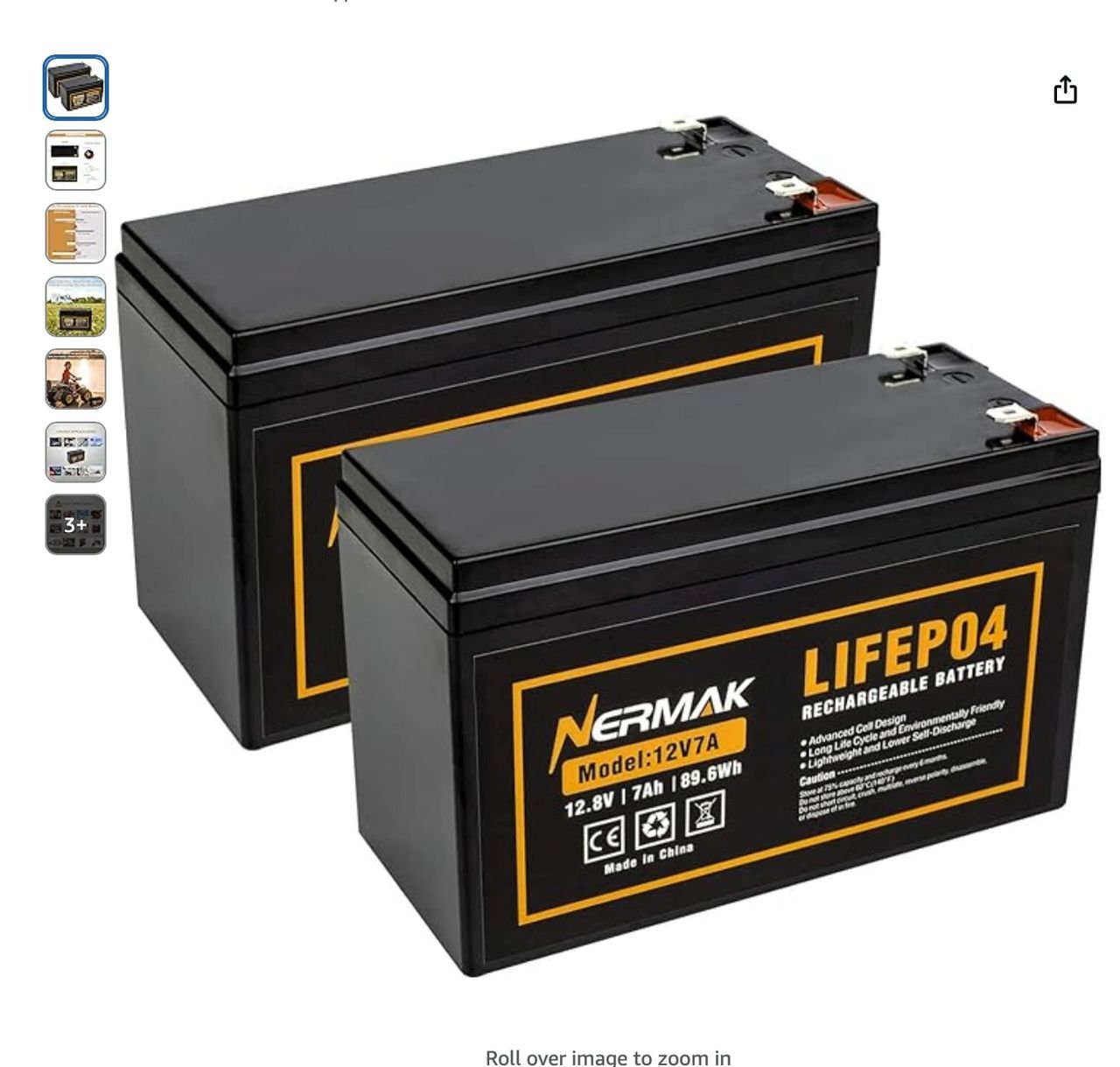Deployment Hardware: Battery Options
As we gear up to start building our Rapid Deployment Device, one topic that keeps showing up in the live streams is power. Obviously, the power source is critical for these little units. For these smaller, rapidly deployable systems, we’ve had to rule out bigger, longer lasting options like a 12-volt high-capacity battery, such as this kind:
There are a few reasons we’re steering clear of those for this build:
Voltage mismatch. These batteries put out 12 volts, but our onboard computer—like the Orange Pi 5 Plus we’re using—runs on 5 volts. That means we’d need a voltage step-down converter. It’s not a huge cost factor, but it adds bulk, saps some efficiency, and introduces another potential point of failure.
Weight. Even the smaller lithium batteries, like those in power wheelchairs, are overkill for our needs. We’re aiming for nimble, not clunky.
Charging hassle. Those 12-volt batteries need a dedicated charger to recharge up after a day’s work. Compare that to the power banks we’ll get into shortly, which can charge from any decent USB power brick—way more convenient.
We will use these larger 12-volt batteries, but in other types of builds later on.
We’ve settled on Anker power banks—specifically the 20,000mAh and 40,000mAh models.
These Anker packs come in two flavors:
The 20,000mAh version: smaller, lighter, and good for about 3 to 4 hours of runtime.
The 40,000mAh version: bigger, heavier, but delivers around 6 to 8 hours of life.
For our Rapid Deployment Devices, we’re targeting short-lived severe weather events—think tornadoes, hail cores, or quick-hitting storms. These aren’t long duration events; they just need to get through a few hours of action. We’re leaning toward the 40,000mAh option for that extra cushion, despite its size. That said, if you’re building or developing with similar setups at home, the 20,000mAh pack is still a solid choice. Both plug straight into the onboard computer (Orange Pi 5 Plus) with a simple USB-C cable—no wiring or voltage converter needed.
Now, you might be wondering: How did we calculate the battery runtime?
Our setup includes three main power-consuming components running off the battery:
The Orange Pi 5 Plus, streaming and encoding video under a high load the whole time.
A USB UVC webcam, capturing all that wild weather footage (hopefully.)
A USB LTE modem, keeping the data flowing to the outside world.
The power banks in play are the Anker 20,000mAh and 40,000mAh models we mentioned.
First, we need to figure out how much power these devices draw. The Orange Pi 5 Plus, under heavy load (think video encoding), pulls around 5 volts at 2.5–3 amps—let’s call it 3 amps to be safe. That’s about 15 watts (volts × amps = watts).
The USB webcam and LTE modem are lighter consumers—each draws roughly 5 volts at 0.5 amps, or 2.5 watts apiece. Added up: 15W (Orange Pi) + 2.5W (webcam) + 2.5W (modem) = 20 watts total.
Next, we convert the battery capacities from milliamp-hours (mAh) to watt-hours (Wh), since that’s what matters for runtime. The Anker power banks output at 5 volts:
20,000mAh = 20Ah × 5V = 100Wh.
40,000mAh = 40Ah × 5V = 200Wh.
Now, divide the battery capacity by the power draw:
For the 20,000mAh pack: 100Wh ÷ 20W = 5 hours.
For the 40,000mAh pack: 200Wh ÷ 20W = 10 hours.
UNDERSTAND: Those are theoretical maxes. In the real world, efficiency isn’t 100%. Power banks lose some useable capacity to heat and voltage regulation—figure 85% efficiency on a good day. So, adjust those numbers:
20,000mAh: 5 hours × 0.85 = 4.25 hours.
40,000mAh: 10 hours × 0.85 = 8.5 hours.
Then there’s usage variation. Our estimates of 3–4 hours for the 20,000mAh and 6–8 hours for the 40,000mAh come from testing under tougher conditions—say, peak loads or spotty LTE signals that make the modem work harder. For your own setup, here’s the simple formula:
Add up the wattage of your devices (volts × amps for each).
Convert your battery’s mAh to Wh (mAh ÷ 1000 × voltage).
Divide Wh by watts, then knock off 15–20% for efficiency.
The math says one thing, but real world use says another. Variables like the on-board fan (which barely draws any power), are hard to calculate for, because it may run constantly or only a percentage of the time. In the coming days and weeks, we'll be testing these units in real world scenarios, such as freezing temperatures by putting them in the freezer to hot summer days by blowing a space heater on them all day. We'll see very soon whether or not the math translates to real world use.
Anker 20,000mah: https://amzn.to/4kcgTEP
Anker 40,000mah: https://amzn.to/3QvuSIp


